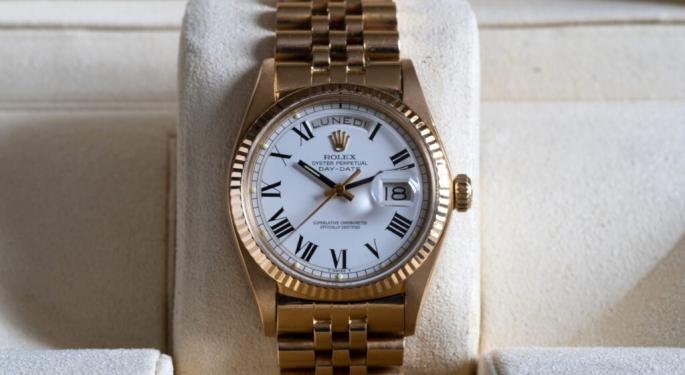From Status Symbol To Warning Sign: Rolex Resale Prices Plummet In Cooling Economy
While data shows that inflation in the U.S. remains above the Federal Reserve's 2% target rate, one particular market has seen significant price reduction: watches.
According to WatchCharts.com, a site that tracks the resale value of luxury watches such as Rolexes, shows the market has turned over, down nearly 50% from its peak in March 2022.
WatchCharts' Overall Market Index tracks the price of different watch models such as the Rolex Datejust, Patek Philippe Nautilus and more. The index reached nearly $100,000 in the spring of 2022 but is currently less than $60,000.
@BuccoCapital, a popular X account on “FinTwit,” shared screenshots from WatchCharts saying "Watch market still hasn't found the floor.”
The pullback in the resale value of watches coincides with a slowdown in the overall economy and highlights the fact that people have cut back on “big-ticket” items. Higher interest rates have made it more expensive to borrow money, limiting demand for things like new houses and cars.
And while many experts predicted a recession with the Federal Reserve raising interest rates, the overall economy has held up well with GDP continuing to grow. But, recently, labor data has indicated a cooldown and the unemployment rate has crept higher, putting pressure on the Fed to cut rates to prevent a full-blown recession.
The environment in the luxury watch market is much different today than it was a few years ago. In the post-COVID-19 market, low interest rates led to big gains in virtually every asset class: stocks, real estate, cryptocurrencies and even luxury watches.
Some on social media speculated that demand for watches as an investment helped prop up prices, rather than people actually buying the watches to own them.
"Rolex has been *very* slow to normalize, for reasons I don't fully understand. It's ~30% of the industry. They make over 1m watches a year," @ShortSightedCap said. "I *think* secondary market prices > primary market created a demand feedback loop, with flippers filling up waitlists."
It's possible that when the Fed cuts interest rates, which it is set to do later this month, demand will once again increase for speculative assets such as luxury watches, but until then, the market could continue to search for the floor.
Read Next:
• Could August Jobs Numbers Keep Recession Fears At Bay? ‘This Time Is Different,’ Analyst Says
Photo: Shutterstock
© 2025 Benzinga.com. Benzinga does not provide investment advice. All rights reserved.
Posted-In: WatchesEntertainment Education General



